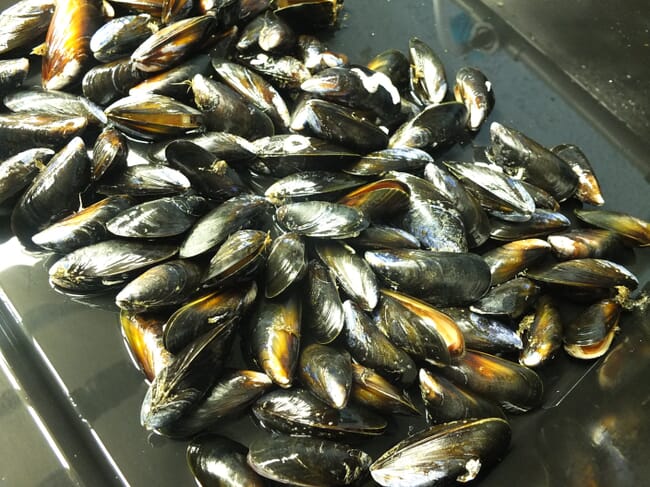
© Tom Morton
Led by Stirling’s Institute of Aquaculture, with support from Shetland Mussels and the Sustainable Aquaculture Innovation Centre (SAIC), the project aims to use DNA sampling to identify the presence of biofouling organisms such as tubeworms in the water as an alternative to current unreliable testing methods.
The diagnostic tool will enable shellfish producers to make informed, timely decisions to deal with biofouling, including environmental management and cleaning regimes. Similar molecular diagnostic techniques are common in finfish sectors, but the project is thought to be a first for the bivalve industry.
Biofouling affects as much as 10 percent of Scotland’s mussel stocks each year. Although harmless to consumers, tube worms can cause changes to mussels’ appearance, as well as damage to the packaging used. It can also lead to issues through the production process, with some studies indicating problems with shellfish growth and weight caused by the worms.
Initial tests are taking place at one of Shetland Mussels’ sites, with the team looking to identify the presence of tube worms through DNA taken from water samples and swabs from shells. Data gathered through the trial will allow them to monitor patterns and seasonal variations that could inform cleaning schedules and potential site selection, as well as preventing future losses.
Stefano Carboni, from the Institute of Aquaculture, said: “Tube worms and associated biofouling is a long-standing concern for the shellfish industry, so it is important that we build an identification tool to support farmers to make informed decisions when they are detected in the water. Shells can be cleaned, but the timing of the process is crucial as larvae may still be present in the water after cleaning, leading to a reoccurrence of the problem.
“Currently the only way to detect tube worms is by looking at a water sample under a microscope, but they can be easily confused with other organisms, and sampling only covers a small volume of water. A more practical and reliable method for identification would be an invaluable development for the industry, which could be applied on a global scale.”
Heather Jones, CEO at SAIC, added: “Shellfish production is a growing area of the Scottish aquaculture sector, and this project represents just one example of pioneering research that will support further sustainable growth to meet the global demand for protein. New data-led techniques such as this DNA diagnostic tool can help to drive the entire industry forward, with benefits spanning the environment, businesses operating in the sector, and the end consumer.”




